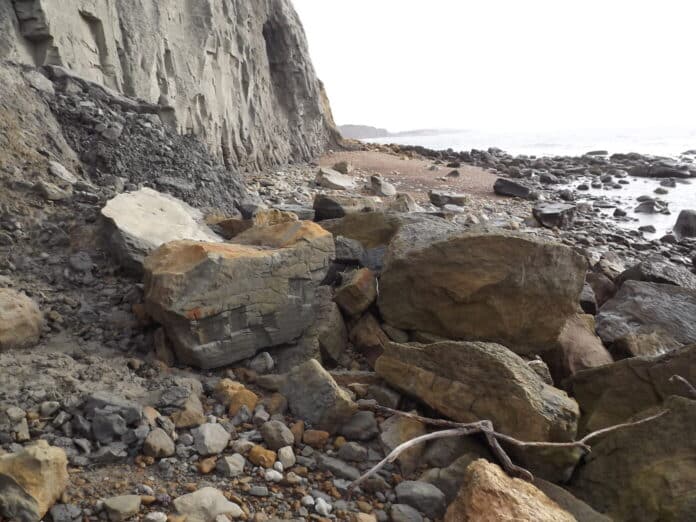This section is probably best covered as a split trip, walking along the beach from Eype and from Seatown. The section between Great Ebb and East Ebb is quite challenging with a boulder strewn beach and this is likely to be difficult unless you are physically fit! East Ebb is the furthest point in the middle distance in the picture below and Great Ebb is below Thorncombe Beacon, the high point in the middle distance.As the rocks seen are nearly horizontal in dip similar material is seen along the section and what you see just depends on the landslips and the height of the cliffs. The rocks exposed in the cliff occur as a very gentle anticline and the Eype Clay (Middle Lias, Lower Jurassic) is exposed at beach level with the Downcliff Sand and Thorncombe Sand above. Higher up the cliff is the Down Cliff Clay before reaching the Cretaceous Gault Clay and Upper Greensand. There is a significant time gap between the Downcliff Clay and the Gault Clay of around 80-90 million years, what geologists call an unconformity. This is seen at a number of locations along the west Dorset coast and is apparent visually due to the change in colour from the grey Jurassic clays to the bright orange/yellow sands of the Upper Greensand most obviously seen at Golden Cap which we will visit in a later instalment of Rock along the Coast. The capping on Thorncombe Beacon is not too obvious in the picture below (in the middle distance) as the capping of sandstone is quite limited due to erosion.

Obviously accessing the different rock layers mentioned above in this section is difficult as can be seen in the picture above. However, as with much of the Dorset coast, land slips are common especially in the winter and so material is regularly brought down to beach level removing the need to clamber up the cliffs (not advisable!). The picture below shows the way in which blocks (in this case of Downcliff Sand) can be found on the beach following mass-movement.
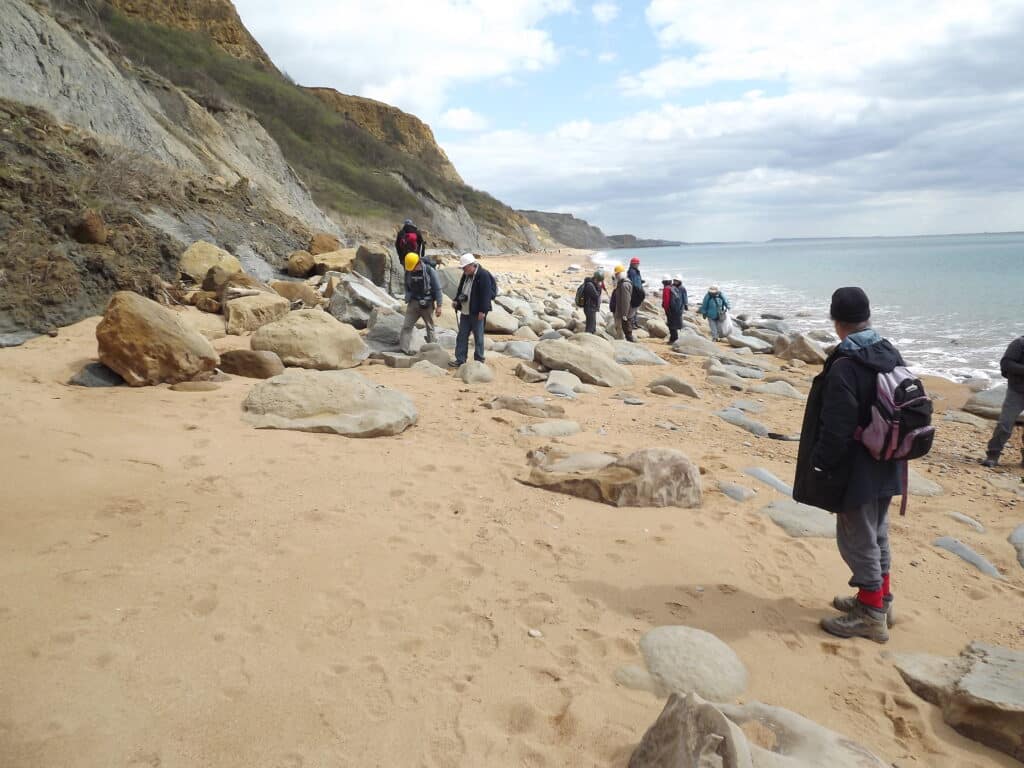
The base of the cliff is formed of Eype Clay which is a massive mudstone, a clay with little evidence of bedding (contrasting with thinly bedded shale). The clay is not very fossiliferous possibly because it was deposited fairly quickly and the muddy sea floor might not have been too hospitable for organisms.
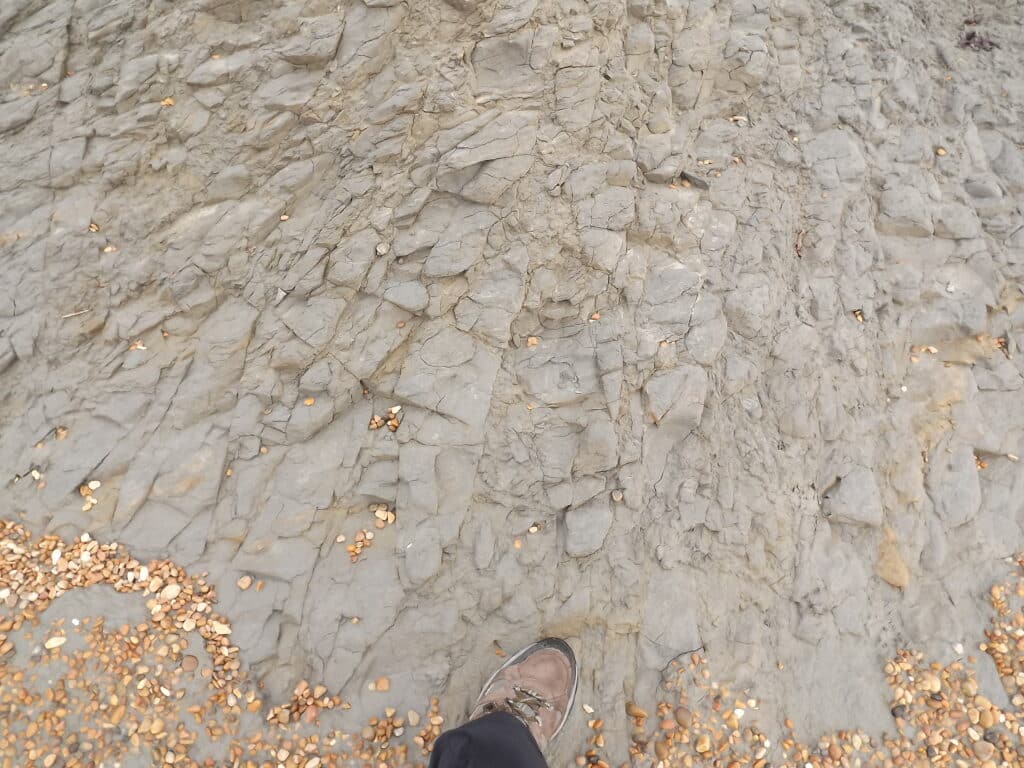
Above this is the Downcliff Sand and mass-movement brings this to beach level. The section shows clear evidence of clay flows and rocks falls and East Ebb is protected by large sandstone boulders (natural rock armour).

Some of these are very similar to the concretions or doggers seen around Osmington Mills from the Bencliff Grit but are of different age within the Jurassic. See Rock along the Coast, Bran Point to Osmington Mills.

Fossils are not too abundant along this section and those that can be found are there due to extreme events in the Jurassic! A starfish bed occurs above the Eype Clay at the base of the Downcliff Sand. Brittle stars have been preserved in what appears to have been a catastrophic influx of sediment covering these fragile creatures. If they are found they are collected because if they remain on the beach they will be destroyed. The extreme storm action during early 2014 and late 2015 shows what can happen along the coast.
Trace fossils are still there and the picture below is a nice example of Thalassinoides!
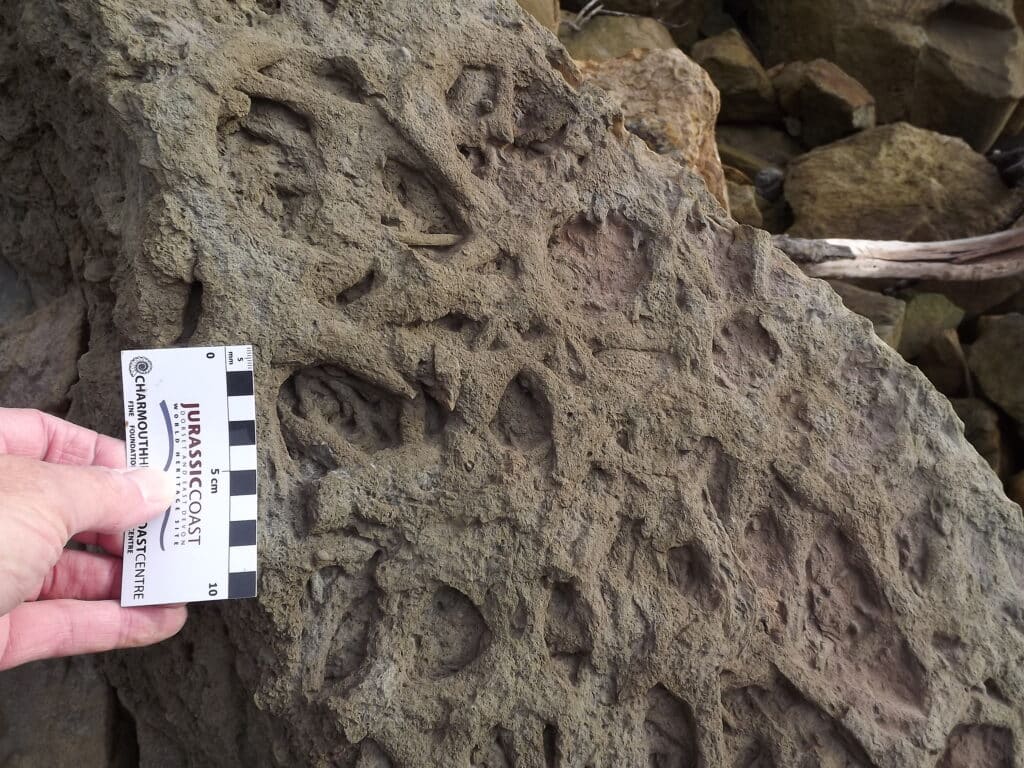
Higher up the cliff the Beacon Limestone is exposed (formerly called the Junction Bed) and this can be very fossiliferous as seen in the picture below with belemnites clearly visible.
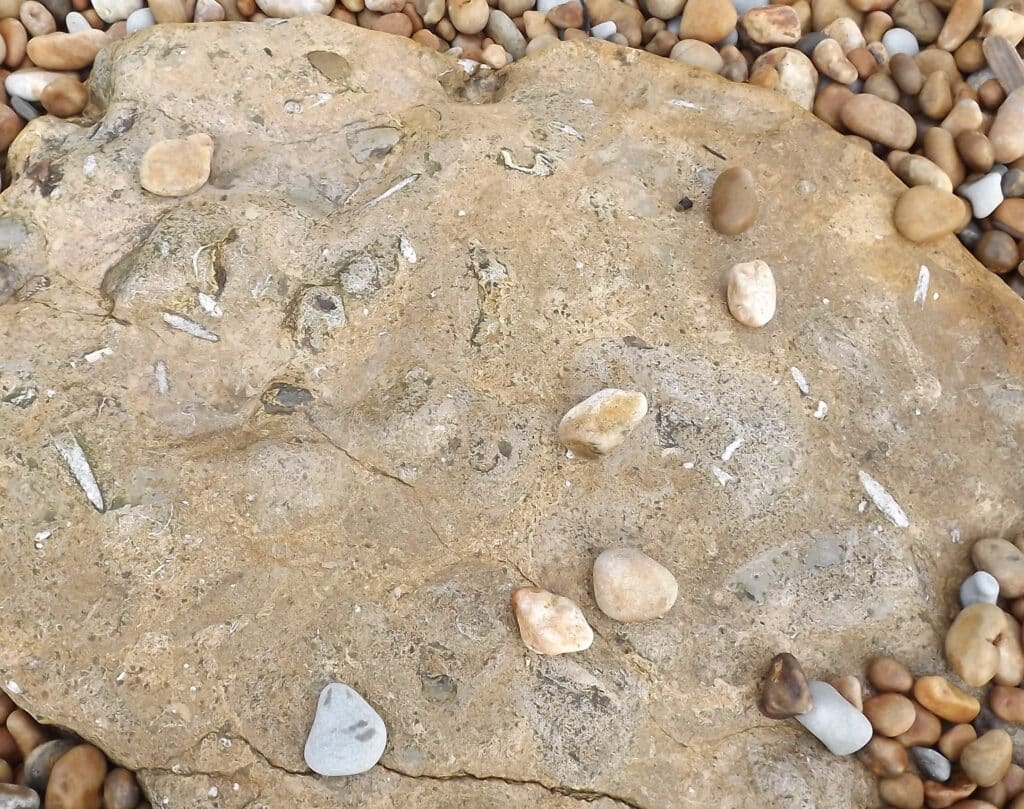
At Seatown there is another fault which coincides with the valley of the River Winniford. Faults are lines of weakness in the rocks and so are often associated with valleys. This small river drains through the beach at Seatown as seen in the picture below.
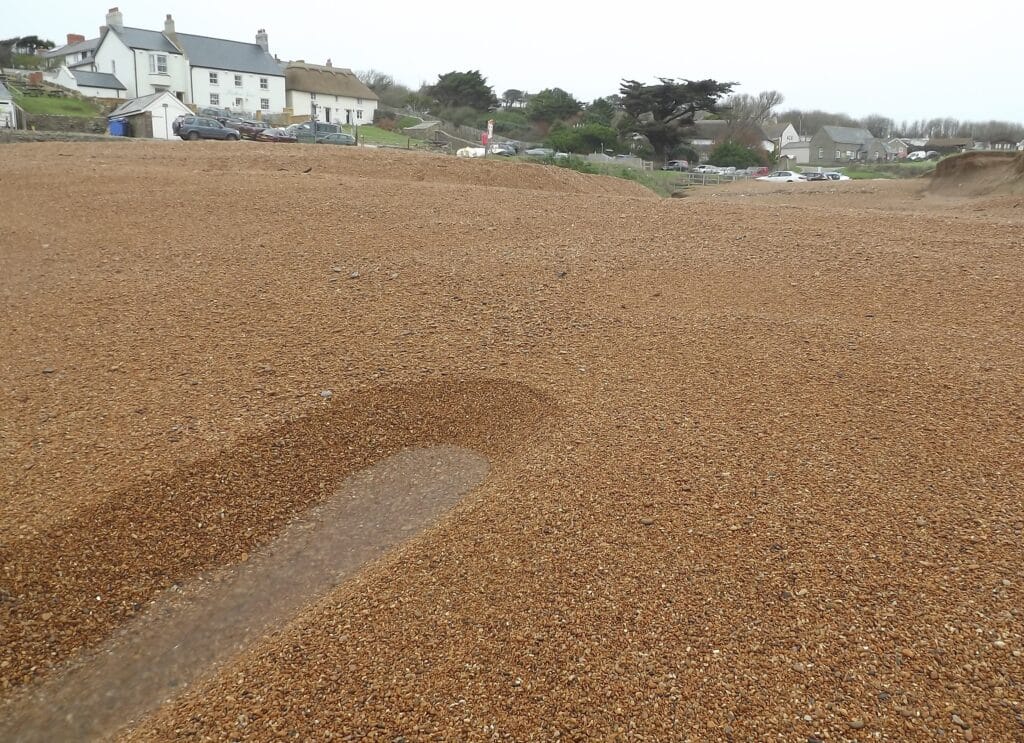
Following your walk along the beach you can always call in at the Anchor Inn for much deserved refreshment and this is highly recommended!
Join us in helping to bring reality and decency back by SUBSCRIBING to our Youtube channel: https://www.youtube.com/channel/UCQ1Ll1ylCg8U19AhNl-NoTg SUPPORTING US where you can: Award Winning Independent Citizen Media Needs Your Help. PLEASE SUPPORT US FOR JUST £2 A MONTH https://dorseteye.com/donate/

